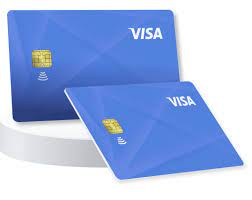In the ever-expanding cosmos of cryptocurrency, the journey of convert BTC to ETH, the pioneer of smart contract technology, is akin to an odyssey through the heart of the digital finance realm. This article delves into the nuances, strategies, and implications of this pivotal conversion, charting a course for those ready to traverse the digital divide.
The Genesis of the Giants
To appreciate the significance of this conversion, one must first understand the origins and ethos of both Bitcoin and Ethereum. Bitcoin emerged in 2009, the brainchild of the enigmatic Satoshi Nakamoto, as a response to the financial crisis, offering a decentralized currency free from central bank control. Its primary purpose is to serve as a digital store of value and medium of exchange.
Ethereum, conceptualized by Vitalik Buterin and launched in 2015, transcended the foundational principles of Bitcoin by introducing smart contracts – self-executing contracts with the terms of the agreement directly written into code. Ethereum is not just a cryptocurrency; it’s a platform for building decentralized applications (dApps), representing a leap towards a fully decentralized internet.
Why Convert BTC to ETH?
The decision to convert BTC into ETH is influenced by a variety of factors. Investors may seek the dynamic potential of Ethereum’s ecosystem, with its myriad dApps, decentralized finance (DeFi) applications, and non-fungible tokens (NFTs). Others may be swayed by Ethereum’s transition to Proof of Stake (PoS) in its Ethereum 2.0 upgrade, promising increased scalability, security, and sustainability.
The How: Navigating the Conversion
Step 1: Choosing an Exchange
The first port of call in this digital odyssey is selecting an exchange. Options include centralized exchanges (CEXs) like Coinbase, Binance, or Kraken, known for their user-friendly interfaces and robust security. Alternatively, decentralized exchanges (DEXs) like Uniswap or Sushiswap offer a more private, albeit less straightforward, experience.
Step 2: Secure Your Assets
Before initiating the conversion, ensure you have secure wallets for both BTC and ETH. Hardware wallets like Ledger or Trezor provide robust security, while software wallets like Exodus or Trust Wallet offer convenience and ease of use.
Step 3: The Conversion Process
With your wallets set, deposit your BTC into your chosen exchange. Navigate to the BTC/ETH trading pair and execute the trade. Be mindful of the exchange rate and transaction fees, as these can vary and impact the final amount of ETH you receive.
Step 4: Safeguarding Your ETH
Once the conversion is complete, transfer your new ETH to your secure wallet. This step is crucial for maintaining control and security over your Ethereum assets.
The Risks and Rewards
This journey, while promising, is not without its perils. The volatility of cryptocurrency markets can lead to significant fluctuations in exchange rates. Regulatory changes can also impact the landscape, making staying informed and vigilant crucial.
Ethereum 2.0: A New Dawn
A significant factor in this conversion journey is Ethereum’s transition to Ethereum 2.0. This upgrade aims to address scalability and environmental concerns through a shift from Proof of Work (PoW) to Proof of Stake (PoS). This move is anticipated to reduce energy consumption significantly and improve transaction speed, making Ethereum a more sustainable and efficient platform.
Legal Considerations
Navigating the legal landscape is an essential aspect of cryptocurrency conversion. While exchanging BTC for ETH is legal in most jurisdictions, it’s essential to remain compliant with local regulations and tax laws. As the crypto regulatory environment evolves, staying abreast of changes is crucial.
Conclusion: A Path to Digital Diversification
The conversion of BTC to ETH is more than a simple currency exchange; it represents a strategic move in the digital asset space. While Bitcoin offers a robust store of value and a hedge against traditional financial systems, Ethereum provides a gateway to a world of decentralized applications and futuristic blockchain use cases.
This conversion reflects the diverse and dynamic nature of the cryptocurrency ecosystem, highlighting the strengths and possibilities inherent in these two blockchain giants. For those embarking on this journey, it represents not only an investment decision but a belief in the transformative power of blockchain technology.
In the end, the conversion of Bitcoin to Ethereum embodies the essence of cryptocurrency – a realm where innovation, technology, and finance converge to create new opportunities and reshape our understanding of money and value. As we continue to witness the evolution of this digital landscape, the BTC to ETH conversion stands as a symbol of adaptability, foresight, and the endless potential of the blockchain world.


